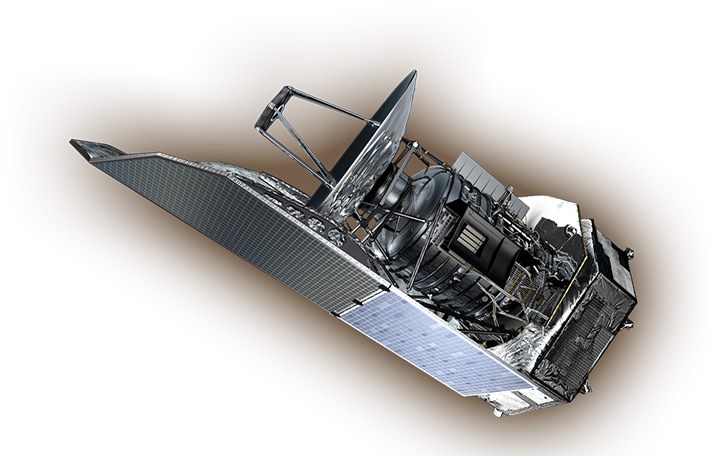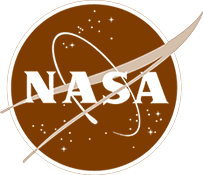Specifications
The Herschel Space Observatory was approximately nine meters high and 4.3 meters wide, with a launch mass of about 3.25 metric tons. It consisted of an infrared telescope, a payload module containing the instruments, and a service module that housed the warm electronics of the instruments, equipment for communicating with Earth, and other infrastructure.
| Height | 9 m (29.53 ft) |
|---|---|
| Width | 4.5 m (14.76 ft) |
| Launch Mass | 3300 kg (7275.25 lbs) |
| Power | 1 kW |
| Launch Vehicle | Ariane 5 |
| Orbit | Lissajous around L2 |
| Science Data Rate | 1.5 Mbits/sec |
| Telescope Diameter | 3.5 m (11.48 ft) |
| Telescope WFE | 10 µm (goal 6 µm) |
| Telescope Temperature | 70 to 90 K (-334° to -298° F) |
| ABS Pointing (68%) | < 3.7" (goal < 1.5") |
| REL Pointing (68%) | < 0.3" (goal < 0.3") |
| Helium II Temperature | < 1.65 K (-456.7° F) |
| Lifetime in L2 (spec) | > 3 yrs |

Biggest Space Telescope
With a primary mirror measuring 3.5 meters in diameter, Herschel's Ritchey-Chrétien telescope was larger than any previous space-based telescope. Shielded from the sun, it was passively cooled to around 80 K (80 degrees Celsius above absoulte zero) by radiating its heat into space.
The mirror was made of silicon carbide, a lightweight ceramic material resistant to stress, fatigue, and extreme temperatures. It can be polished as if it were glass, deviating from perfect smoothness by no more than one micron, a requirement to avoid distorting the images it receives.
Operation Centers
Herschel's Mission Operations Center (MOC) was located at ESA's European Space Operations Center (ESOC) in Darmstadt, Germany and was responsible for the daily operations, health and safety of the spacecraft. For communication with the spacecraft ESA's New Norcia (close to Perth, Australia) and Cebreros (close to Avila, Spain) deep space antennas were used.
The Herschel science operations team was situated in the Herschel Science Center (HSC) at ESA's European Space Astronomy Center (ESAC) in Villanueva de la Cañada in Spain.
The Herschel instrument control centers for monitoring and optimising the instruments' performance were located at:
- PACS: the Max Planck Institute for Extraterrestrial Physics, Garching, Germany
- SPIRE: the Rutherford Appleton Laboratory, UK
- HIFI: SRON Netherlands Institute for Space Research, the Netherlands.
An additional center was the NASA Herschel Science Center located at IPAC at the California Institute of Technology in Pasadena, California, USA.







